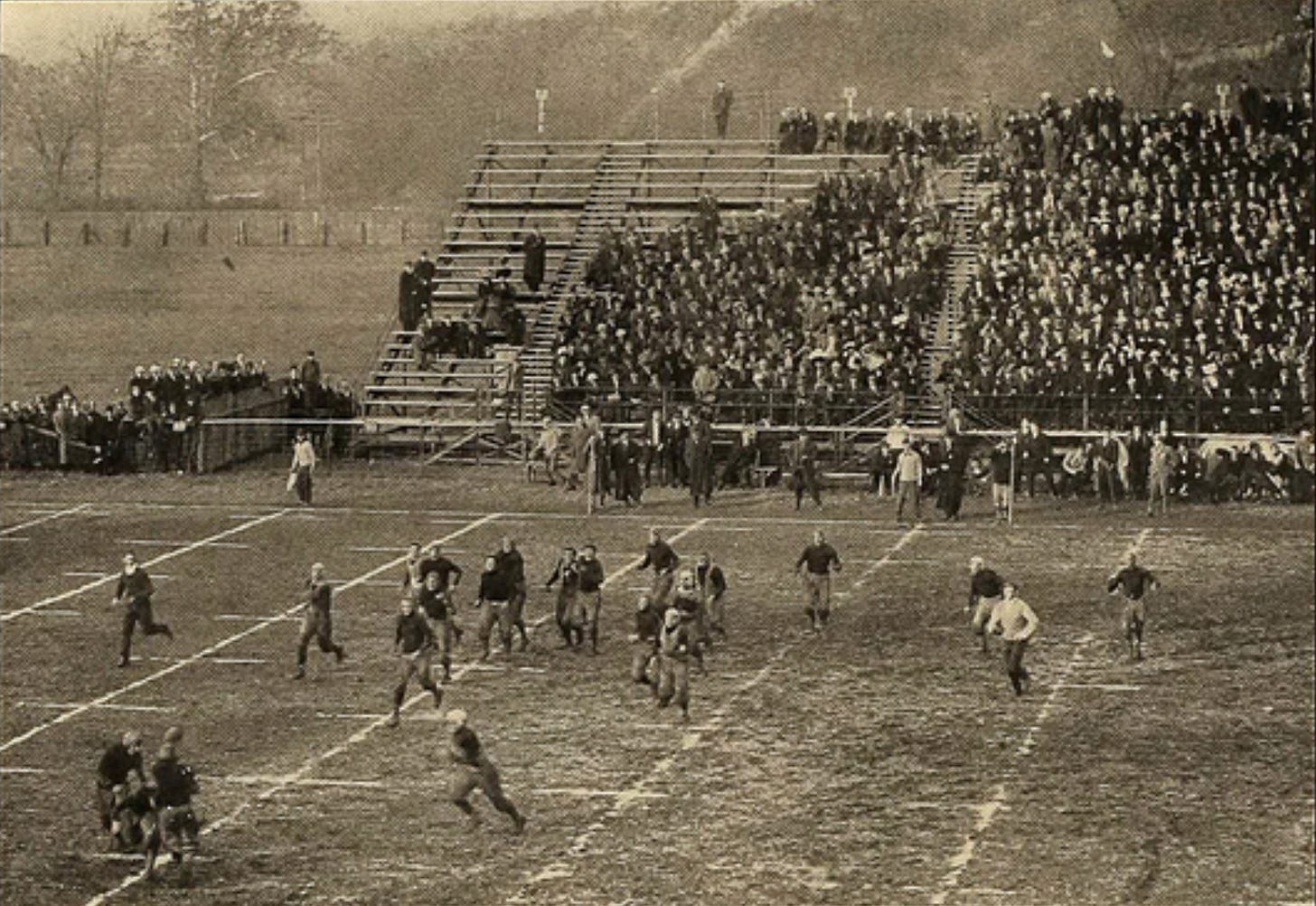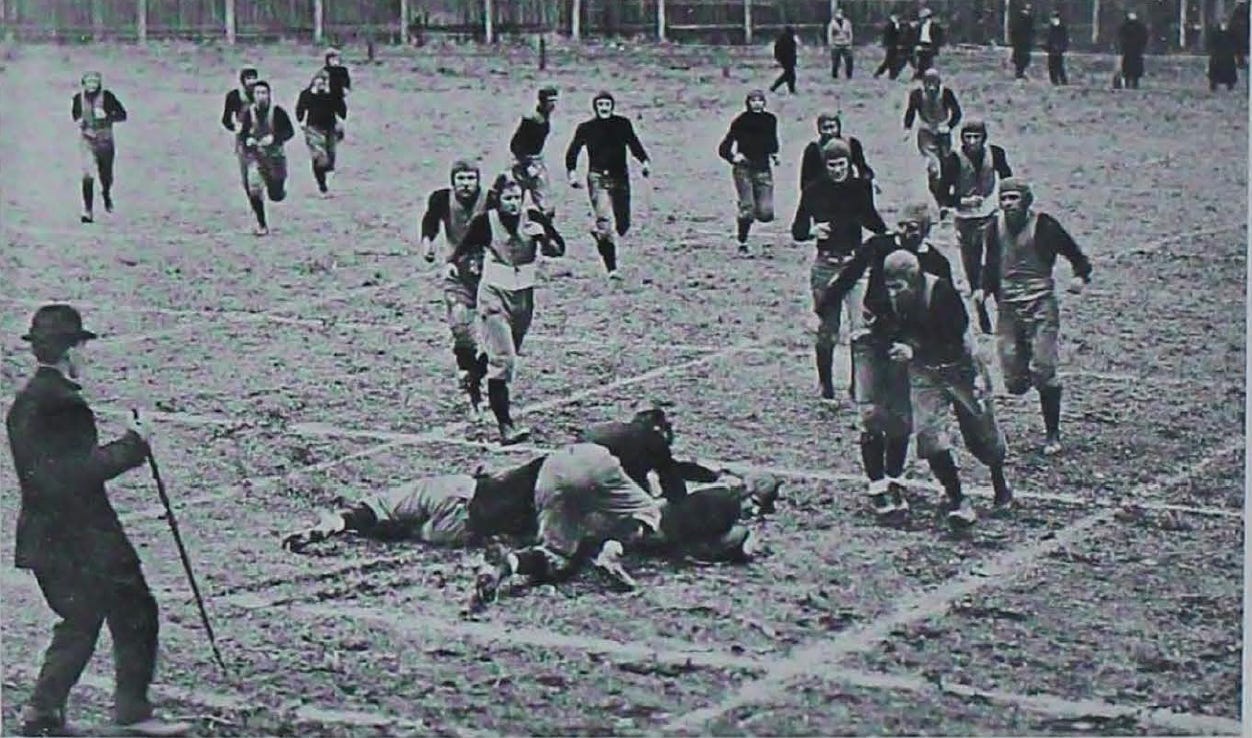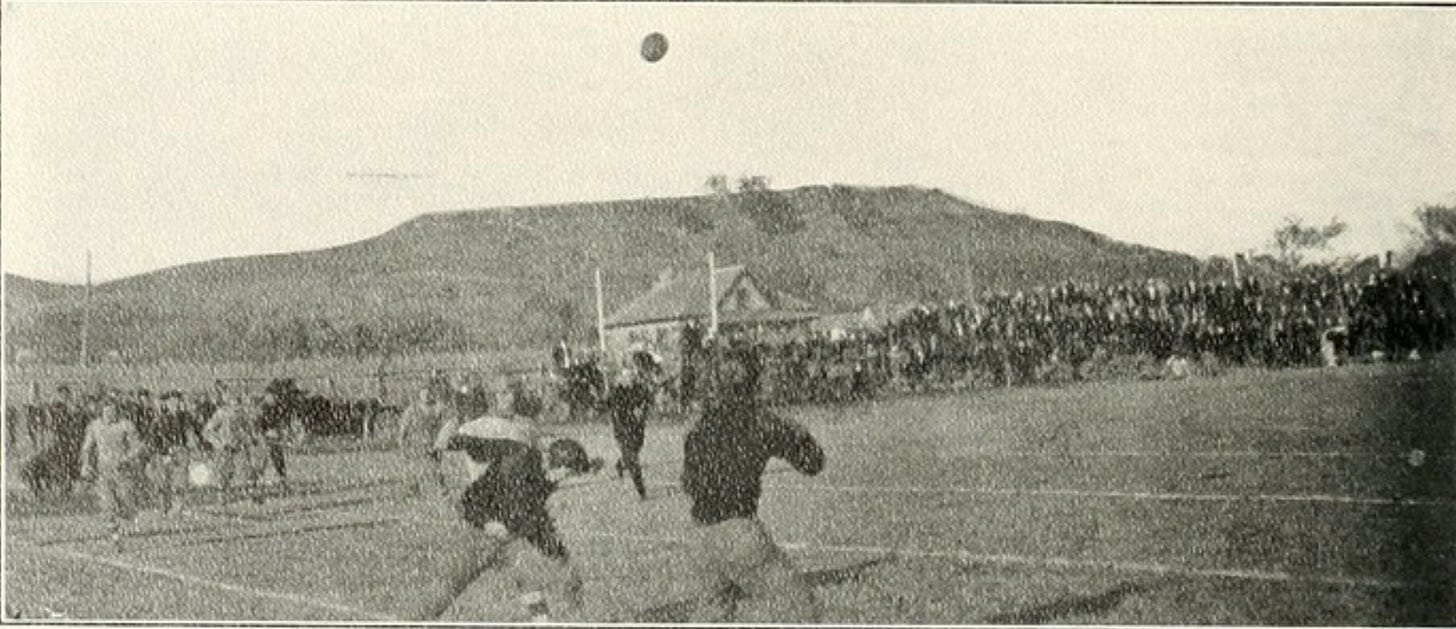How Intentional Grounding Came To Pass
The rules concerning the forward pass between 1906 and 1914 were quite different from today. At the time, the forward pass was an experiment to make the game safer. None of the rule makers of 1906 knew whether it would work or how they might need to tweak the rules to make the forward pass successful.
Initially, passes had to be thrown from a spot five or more yards to the right or left of the center, and passes thrown over the goal line touchbacks. A rule switch in 1910 required throwing the ball from five yards behind the line of scrimmage, a rule the colleges retained until 1946. The same year, passes traveling more than twenty yards downfield became illegal, a rule cast aside two years later.
While those rules are worthy of separate articles, the current focus is on incomplete passes. Among the original restrictions on the forward pass was a rule that passes hitting the ground without touching a player on either side resulted in a turnover, with the opponent taking possession at the spot of the pass. In 1907, they changed the penalty from a turnover to a 15-yard penalty and further specified that the rule applied only when the ball landed in the field of play. A new rule covered forward passes landing out of bounds, in which case, the ball belonged to the opponent where the pass crossed the sideline. The combination of rules made the forward pass risky, so many teams were reluctant to use it, mainly because few players knew how to throw the ball well, and fewer coaches knew how to design plays to take advantage of the forward pass.

Some coaches and players tinkered with the pass and had success, but with injuries and deaths remaining high, the rule makers removed some restrictions to encourage greater use of the forward pass. For the 1910 season, the NCAA adopted rules comparable to today's. That is, incomplete forward passes landing in the field of play no longer incurred penalties. Those thrown on first or second down led to the offense retaining possession and getting the ball at the previous spot. Likewise, on the third and final down of a possession, incomplete passes landing in the field of play resulted in the opponent getting the ball at the previous spot. However, passes landing out of bounds continue to be spotted where the ball crossed the sideline.

Perhaps you can see where this is going. During the next several years, passers who were under pressure took advantage of not being penalized for incomplete passes by throwing the ball into the ground to avoid being tackled. Intentionally grounding was legal, so their teams retained possession at the previous spot.
Teams also altered their tactics on third down (or fourth down after 1912). Whereas teams had typically punted on their final down, punts ran the risk of being blocked, returned, or fair caught, which offered the potential for a free kick. While solid punters of the era booted the ball thirty-five yards downfield, teams often had backs that could throw the ball forty or even fifty yards. Rather than punt, Princeton, Dartmouth, Yale, and Illinois opted to throw the ball downfield and out of bounds. Of course, the offense lost possession of the ball, but the opponent received the ball downfield, where the ball went out of bounds. (These were the original arm punts.)

Throwing the ball into the ground or out of bounds on the final down were quickly recognized as problematic, leading the 1914 rule makers to make intentional grounding subject to a 10-yard penalty from the previous spot. Likewise, the 1915 rule makers treated passes thrown out of bounds like any other incomplete pass; the ball returned to the previous spot with possession depending on the down in which the incomplete pass occurred.
Incomplete passes have been treated similarly since then, while intentional grounding was tweaked over the years. The penalty increased from ten to fifteen yards in 1924 before being reduced to five yards in 1949. Other rule changes required an offensive player to be in the area of the pass (opposing players no longer counted). Later, only eligible receivers counted, and finally, the eligible receiver had to have a realistic opportunity to catch the pass.
Intentional grounding gained a new definition in 1982 when the college game allowed passers to throw the ball out of bounds to stop the clock, while "spiking" the ball became legal in 1990.
So, the passing game transitioned from one in which incompletions were turnovers to having incompletions penalized by yardage, to intentional incompletions being penalized, and finally to specific intentional incompletions being within the rules. Where things will go next is anyone's guess, but future rule makers will undoubtedly alter the game only with the best intentions.
Football Archaeology is reader-supported. Click here to buy one of my books or otherwise support the site.

